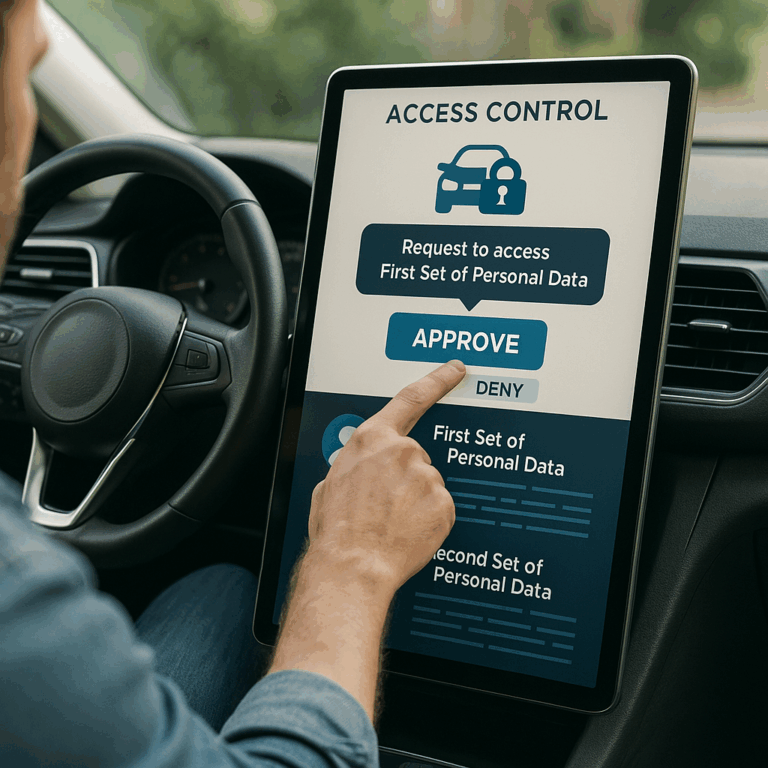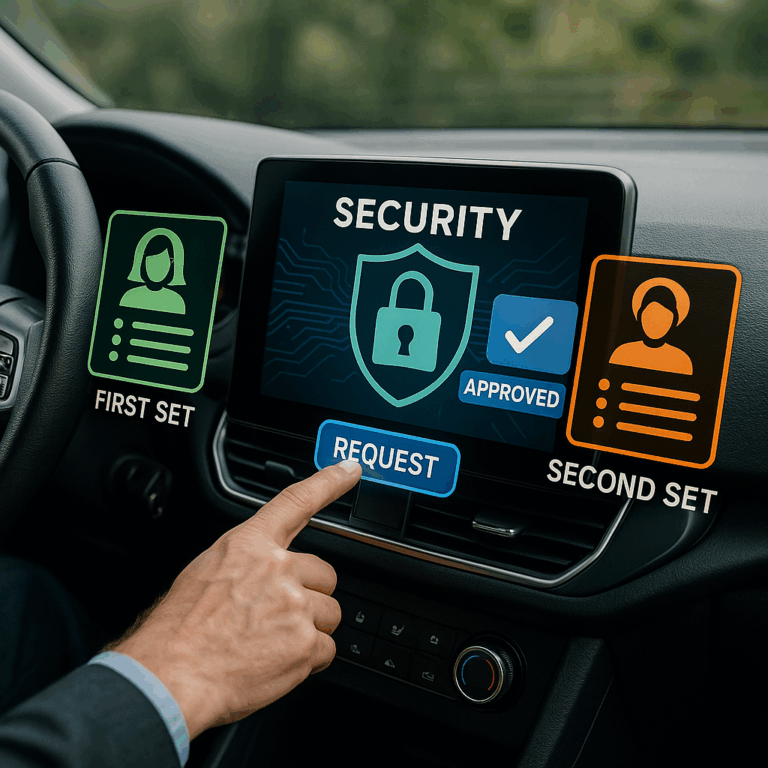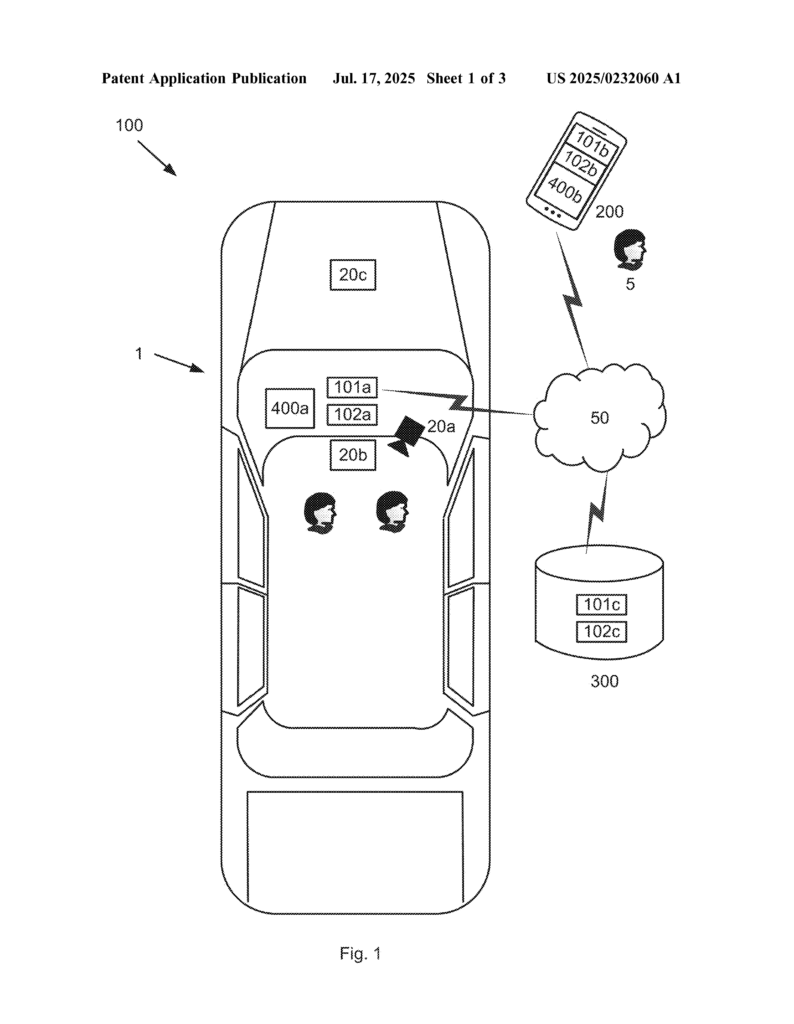Invented by SETTERBERG; Johan, LINDBERG NILSSON; Erik

In today’s world, our cars know a lot about us. But who can see that data? A new patent application proposes a smart way to control who gets to see your information when your car is shared or serviced. Let’s explore why this matters, how it fits into the bigger picture, and what makes this invention unique.
Background and Market Context
Modern cars are not just machines that take us from place to place. They are smart devices, collecting details about where we go, how we drive, and even who rides with us. Cars today use cameras, sensors, GPS, and microphones to gather all sorts of information. This data can tell a lot about our daily lives, habits, and even our friends and family.
People are sharing cars more than ever. Families use one car together. Car rental services let strangers drive the same car in a single day. Car-sharing apps are everywhere. Even when you take your car to a service center, someone else gets access to your vehicle for a while. With every new person who uses or works on your car, there’s a risk that your personal information could be seen by someone you don’t know or trust.
This is a big worry for drivers. Imagine if a mechanic could see where you drove last weekend, or a rental user could check your saved contacts or favorite locations. Many countries also have strict privacy laws, like the GDPR in Europe, that require this kind of personal data to be protected. Companies can face big fines if they don’t do enough to keep this data safe.
Right now, most cars don’t have a good way of separating the data that is needed for service or sharing from the data that is truly private. Often, if someone has access to your car, they can get to everything. There’s no easy way to only share what’s necessary. This is a growing problem as cars become smarter and collect more information.

Car makers and tech companies know that protecting personal data is not just about following the law—it’s also about building trust with drivers. People want to feel safe when they use a shared car or leave their car at the shop. If they know their private information won’t be shared unless they say so, they will feel more confident using these services.
That’s why there is a real need for a better system. Drivers should be able to decide who can see their data, when, and for what reason. Service staff should only see what is needed to do their job. Other users should not get access to the last driver’s information. A car that respects your privacy can stand out in a crowded market, and new laws are pushing companies to find smarter solutions.
Scientific Rationale and Prior Art
Why is this a tough problem to solve? The answer lies in how vehicles collect, tag, and store all the data. Every trip generates records—where you went, your speed, music choices, navigation history, and sometimes even audio or video from inside the car. These records are tagged with your user identity. But until now, most systems just keep all this data together in one place, without any real separation.
Earlier solutions have tried to address the problem in simple ways. For example, some cars offer a “guest mode” that hides certain features, but it’s basic. Other systems let drivers manually clear data before giving up their car, but this can be slow and easy to forget. In many cases, even with these tools, personal records might still be stored in hidden files or sent to cloud servers for backup, making it unclear what’s really private.
Some car makers let drivers set user profiles, which can store seat positions, radio favorites, or climate settings separately for each person. But these profiles rarely control access to deeper personal data, like trip history or in-car video. And when maintenance is needed, service staff often have the same access as the car’s owner, letting them see more than is needed for their job.

Cloud storage adds another layer of complexity. Cars may sync some data to remote servers for analysis or backup. While this can help with customer support or software updates, it also raises questions about who controls that information and how it gets shared in special cases like repairs, accidents, or theft investigations.
Privacy rules, like those found in the GDPR, require companies to give users more control over their data. That means you should be able to decide what gets saved, how long it stays, and who can look at it. But most car systems today don’t make this easy. They don’t separate the different kinds of data, and they don’t give drivers simple ways to approve or deny access on a case-by-case basis.
In recent years, some efforts have been made to build better access controls. For example, a few platforms can require a password, PIN, or even a biometric check before showing certain data. Others let users set up permissions for apps that connect to the car. However, these systems often rely on the driver remembering to set everything up—and they don’t always work smoothly when the car is used by several people or is in for repairs.
Existing inventions have not solved the key challenge: how to let someone (like a mechanic) see just the data they need, right when they need it, while keeping everything else locked away. There is also no good way to tag data with more than just a user name—for example, to mark some records as extra sensitive, or to note which privacy rules apply.
What’s missing is a smart system that can sort data into different sets, tag them with user identities and privacy labels, and allow or block access automatically based on who is asking and why. The system should learn from user preferences and be able to use things like location and type of request to make better decisions. Artificial Intelligence can help sort and manage all this information, but few car systems use this kind of technology for privacy control.
This is where the new patent application makes a big leap. It proposes a system that not only stores different sets of data with special tags, but also uses AI and user preferences to decide what gets shared, when, and with whom. It fits well with the newest privacy laws and aims to give drivers more confidence that their information is safe, no matter who is using their car.
Invention Description and Key Innovations

The heart of this invention is a vehicle system that works like a smart gatekeeper for your personal data. At its core, there is special processing circuitry—a kind of brain for the car’s privacy controls. This circuitry stores your personal data in separate groups, each tagged with your identity and, if needed, special privacy labels like “GDPR data.” It lets you set rules for how your data should be handled and learns from your choices over time.
When someone needs to access your data—maybe because your car is at the shop or a new user is logging in—the system sends a request message. This message asks for approval to see a specific set of data. For example, a mechanic might need to see speed records for a certain day to check the battery, but not your trip history or in-car video. The system checks the request and waits for a response. You, as the car owner or main user, get to approve or deny the request through your phone or another connected device. The response message tells the system what is allowed and what is not.
Once approval is given, the system only opens up the data that’s needed. The rest stays hidden, locked away, or even deleted if you want. The system remembers your choices, so if you always let the service center see certain info but never share others, it can make this process faster next time.
The invention uses several clever tricks to make this work:
First, it sorts data as soon as it’s collected. It looks at where the data comes from—like a camera, GPS, or engine sensor—and tags it right away with your user ID and the type of data. This sorting can be based on the sensor, the source, or even special privacy rules. For example, anything from a microphone inside the car might always be marked as highly private.
Second, the system is flexible about where data is stored. You can keep it only in the car, save a backup in the cloud, or store it on a connected device like your phone. This gives you more control over who might be able to hack or steal your information.
Third, Artificial Intelligence comes into play. The system can use a neural network or other AI model to learn from your settings and choices. If you always want to hide in-car video but share speed data, the AI will suggest this automatically. If privacy laws change or you move to a new country, the system can adjust how it tags and protects your data.
The invention is also smart about timing and location. It can check if your car is at a certain place—like a service center—before opening up any data. This means a mechanic can only access what they need when the car is in their shop, and not from somewhere else. You can set rules that only allow data sharing at certain times or in special locations, making it even harder for someone to get your information by accident or on purpose.
The system can also help with legal compliance. If some of your data is marked as “GDPR,” the system will make sure it’s only shared if you agree, and it will keep a record of your approval. This not only protects you, but also helps car makers and service providers follow the law.
Another smart part of the invention is how it deals with different kinds of users. Family members, rental customers, or car-sharing users can each have their own profiles, and the system can make sure that one person’s private data never gets shown to another. If someone new gets access to the car, they start with a clean slate, and the system won’t show them your history or private info.
Finally, the system is designed to be easy to use. Approving or denying access can be done from your phone, and you don’t need to be a tech expert to set your preferences. The system can guide you through the process, explaining what each choice means and helping you keep your data safe without making it hard to use your car.
In practice, this means you can leave your car at the shop knowing the mechanic will only see what they need. You can share your car through an app without worrying about strangers seeing your personal details. And if there’s ever a question about who accessed your data and when, the system keeps a record for you to check later.
By putting you in control and using smart technology to manage your data, this invention offers a new level of privacy for car owners and users. It’s a big step forward for personal data protection in the world of connected vehicles.
Conclusion
Cars are becoming more connected and are collecting more personal information than ever before. With so many people using and servicing the same vehicle, protecting this data is no longer just a legal need—it’s what drivers expect. The new system described in this patent application offers a clear, easy way to decide who can see your data, when, and for what purpose. By separating information, using AI to learn your preferences, and giving you control at every step, it solves the privacy problems that older systems could not. As cars get smarter, this kind of system will be key to keeping your personal life private, building trust, and staying ahead of changing laws and consumer expectations.
Click here https://ppubs.uspto.gov/pubwebapp/ and search 20250232060.
